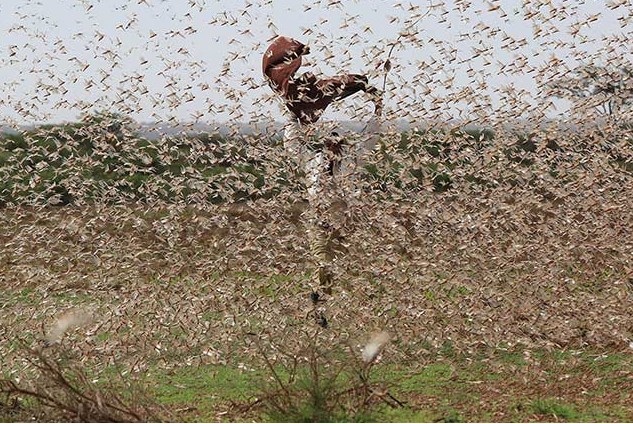
Wednesday December 18, 2019

MOGADISHU (HOL) - The Food and Agriculture Organisation (FAO) has warned thousands of hectares of land in Somalia are on the brink of a desert locust attack worsening an ongoing food crisis in the Horn of African nation.
In a statement released Wednesday, FAO said the locust invasion which is the worst in 25 years could destroy harvests in Somalia while the impact could be spread into next year as the locusts are now breeding in Somaliland, Mudug in Galmudug state and Puntland.“We are talking about a medium to long-term intervention. The impact of our actions in the short term is going to be very limited, but we can make a difference to support livelihoods and avoid further disastrous consequences for the next Gu season in 2020 if we act now,” says Etienne Peterschmitt, FAO Representative in Somalia.
To date, an estimated 70,000 hectares of land have been infested by the locusts destroying crop and pastures in Somalia and Ethiopia. Pictures from Galmudug, Somaliland and Puntland have showed the locusts decimating farms leaving populations at a risk of starvation even as the UN is mobilizing funding for millions of Somalis under acute food insecurity.Over the next six months, FAO said, more than 100,000 hectares of land will require direct control intervention in Somalia.
There is need for immediate institutional, infrastructural and technical investments for larger scale actions in 2020 and beyond. FAO is appealing for $3 million for immediate response.
The situation is far worse than anticipated and it has been exacerbated by exceptionally high rainfall and cyclone Pawan. If left unattended, Desert Locust will likely spread to the main crop growing areas in southern Somalia, northeastern Kenya, Eritrea and Djibouti, FAO said.
So far, the locust infestations have been confined to rangeland and grasslands areas in Somaliland and Puntland.
However, once adults form immature swarms, there is a greater possibility that some swarms will migrate south towards the Ethiopian border area with southern Somalia (Jubaland, South West and Hirshabelle Federal Members States) while other swarms will remain in place, mature and lay eggs for another generation of breeding, according to FAO.